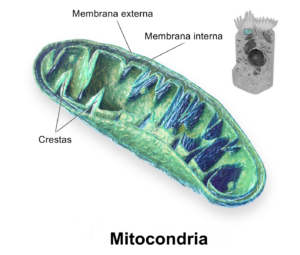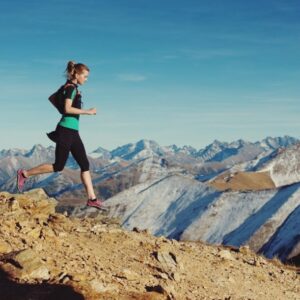At the 2016 Olympics, in just 9.81 seconds and 42 strides, Usain Bolt won the men’s 100-meter final. A few days later, Eliud Kipchoge won the marathon after covering 26 kilometers in 2 hours and eight minutes. Although the physical demands of these incredible feats are vastly different from each other, there is much similarity between them.
Bolt and Kipchoge started by converting phosphocreatine, the energy-dense chemical held in muscle tissue, into ATP, the energy-carrying molecule, because the starting pistol was discharged. However, both athletes’ phosphocreatine reserves soon ran out, requiring their systems to use glucose as a source of ATP to help their muscles go on for a few more minutes.
A few minutes feel like an eternity to sprinters like Bolt and his teammates. However, marathoners have a long way to go. These endurance athletes depend upon a slower but more effective method of producing ATP to cross the finish line—using oxygen (aerobic) to burn fats and carbs in parts of the cell called mitochondria.
More of these aerobic power plants are incorporated into muscle cells by elite endurance athletes like Kipchoge and Usain Bolt than by any ordinary human. Within some minutes of activity, these athletes’ mitochondria swiftly begin to activate; but even in the best-case scenario, this switch doesn’t flip instantaneously. All great athletes strive for little advantages and endurance athletes, the mitochondria are a target for generating marginal improvements. Exercise scientists are seeking to learn more about how these structures adapt to exercise and how their oxygen supply can be increased. Their discoveries are starting to guide training regimens and may have therapeutic applications for non-athletes, like the administration of some of the advantages of exercise with a pill.
The classic image of isolated, bean-shaped mitochondria is analogous to those seen in the liver, but in muscle cells, these power plants form enormous tubular networks. The structure resembles a clump of seaweed or spaghetti. They extend out like tendrils, dispersing energy effectively across the muscle cell. The longer and more widely fused the mitochondria, the better they are at producing ATP when it is required.
Mitochondria are not only quite active, constantly merging and dissolving but also adaptive. After only 14 days of normal exercise, the number of mitochondria in the muscle increases.
Going on a long run causes physiological stress in someone who performs very little exercise. This results in a carboxylic acid buildup in the blood and the core body temperature and pulse rise. Struggling, the body responds by ramping up the expression of the many genes—including those for making mitochondria and mitochondrial proteins. This will continue for months with regular activity—great news for exercise neophytes!

Exercise not only promotes the generation of mitochondria but also changes the structure and performance of existing ones in ways that enhance physical stamina. Research shows that the mitochondria within the leg muscles of endurance-trained athletes have more inner membrane folds (called cristae) than those of people who exercise recreationally. This increases the ratio of surface to mitochondrial volume. When cells respire, vital enzymes bind to those cristae to transfer electrons. More folds equal more area, which suggests more oxygen uptake sites in the muscle. Therefore, an excellent endurance athlete ought to have more effective mitochondria than average.
Regular exercise also causes mitochondrial enzymes to adapt and organize themselves better. One study found that after three workout sessions every week for four months, proteins within the mitochondria grouped to create complexes that improved the efficiency of electron transfer. The capacity of electrons to be efficiently moved around to supply ATP is necessary for the electron transport chain that enables cellular respiration.
Highly skilled athletes’ bodies seem to adapt further by storing energy in fat globules closer to their mitochondria. The fuel is, thus, found closer to where it is needed, like having a fridge in the kitchen as opposed to the living room.
These sorts of adaptations take time to form. The quantity and caliber of mitochondria are directly related to the amount and intensity of training. Additionally, they’re transient—as muscle mitochondria only have a one to two-week half-life, in the absence of continuous activity, their quantity can swiftly drop from Olympian to mediocre levels.
It is difficult to continue gaining progress, whether or not athletes continue their training. As their bodies change, more effort is required to make additional advancements. They have to figure out how to exert ever-increasing pressure on their bodies.
Traditionally, training methods are established by coaches and athletes through trial and error, and scientists have delayed looking at how and why they work. But now things have changed, with fundamental studies of mitochondria laying the groundwork for bettering elite conditioning regimens.
Training style and quality do have an impression on mitochondria. One strategy is to perform an intense exercise to exhaust the body’s glucose reserve within the muscle, referred to as glycogen, then continue training. It has been demonstrated that this stress promotes the destruction and repair of mitochondria.

Altitude training is another well-liked method for forcing the bodies of athletes to adapt. After the 1968 Olympics, which were hosted in Mexico City at an elevation of roughly 2,300 meters where there’s less oxygen than when exercising at sea level, the custom gained popularity. The “skinny” air made it difficult for even the best endurance runners to maintain their blood oxygen levels. Athletes started their training at altitude, and therefore, the practice of stressing the bodies of top competitors there is still popular today. Sleeping at high elevations is one of the newest methods of training. The reverse strategy is getting used by some coaches and players, who practice at high elevations while living closer to the water level.
When an athlete trains at a high altitude, their body adapts by producing more blood, red blood cells, and increasing heartbeats, all of which help muscles get the increased oxygen they require and enhance mitochondria. A different kind of physical stress, though, might be even more powerful. Heat is a major stressor during endurance races, with greater temperatures decreasing performance. Running pace in top marathons decreases as ambient air temperature goes over roughly 12 °C.
Dr. Carsten from Inland Norway University of Applied Sciences started an experiment with 50 high-level amateur cyclists in November 2020 to examine the effect of heat training. One group cycled in a 38 °C chamber, another in ambient conditions, and still another in garments designed to retain body heat. In addition to their regular training, the program was divided into one 50-minute session every day, five days a week for five weeks. He found heat-retaining bodysuits to improve athletic performance. He is now attempting to discover if any of these increases might be attributed to mitochondrial alterations.
Carsten argues that athletes release heat-shock proteins (HSPs) when they work out in the heat or wear a suit. Several HSPs are known to be involved in adaptations to endurance and exercise performance, and some such as HSP72 promote mitochondrial synthesis. In one mouse study, 15 bouts of heat stress over three weeks had more than double the impact on HSP72 content in muscles as endurance training. Carsten intends to take some heat-trained cyclists to the Swiss Alps for altitude training and compare the outcomes.
Sports scientists must study the competitor’s muscles to better understand the influence of training on athletes’ mitochondria. That is not an easy process. A biopsy of a person’s muscle tissue is the finest technique to research mitochondria which utilizes a pencil-sized probe to retrieve 50-100 milligrams of tissue throughout the process. Researchers may then assess not just the oxygen consumption of the tissue, but also the activity of enzymes that function as proxies for mitochondrial biogenesis.
Understanding the processes through which exercise increases mitochondrial volume in athletes might lead to therapies that target those pathways in non-elite persons, such as the elderly or the sick. UrolithinA, a supplement, has shown promise in clinical studies for enhancing mitochondrial function in elderly persons with sedentary lifestyles. However, this research has been limited in scope thus far, and much remains to be discovered.
Researchers are unconvinced that obtaining a biopsy to establish an athlete’s mitochondria status is of any service to an individual—at least for the time being. All of these athletes’ muscles are already densely packed with effective mitochondria, so any discoveries are unlikely to alter medal aspirations at the next Olympics.
The importance of mitochondria in sports may be seen mostly in assessing the efficacy of various training and conditioning regimes. More research is needed to understand how mitochondria operate and respond to training. However, if there is the possibility for a marginal benefit from insights into mitochondrial optimization, athletes and coaches are likely to be open to new ideas. And, in the lengthy race to reach peak sports performance, researchers are ready to take the baton.
Sources:
- https://www.britannica.com/story/how-fast-is-the-worlds-fastest-human#:~:text=In%202009%20Jamaican%20sprinter%20Usain,stunning%20nature%20of%20Bolt’s%20performance.
- https://en.wikipedia.org/wiki/Eliud_Kipchoge
- https://www.nature.com/articles/s41586-022-04828-5
- https://www.ncbi.nlm.nih.gov/pmc/articles/PMC4075653/
- https://physoc.onlinelibrary.wiley.com/doi/10.1113/JP273040
- https://www.cell.com/cell-metabolism/fulltext/S1550-4131(16)30582-4?_returnURL=https%3A%2F%2Flinkinghub.elsevier.com%2Fretrieve%2Fpii%2FS1550413116305824%3Fshowall%3Dtrue
- https://www.nature.com/articles/s42255-019-0073-4
- https://physoc.onlinelibrary.wiley.com/doi/10.1113/JP278611